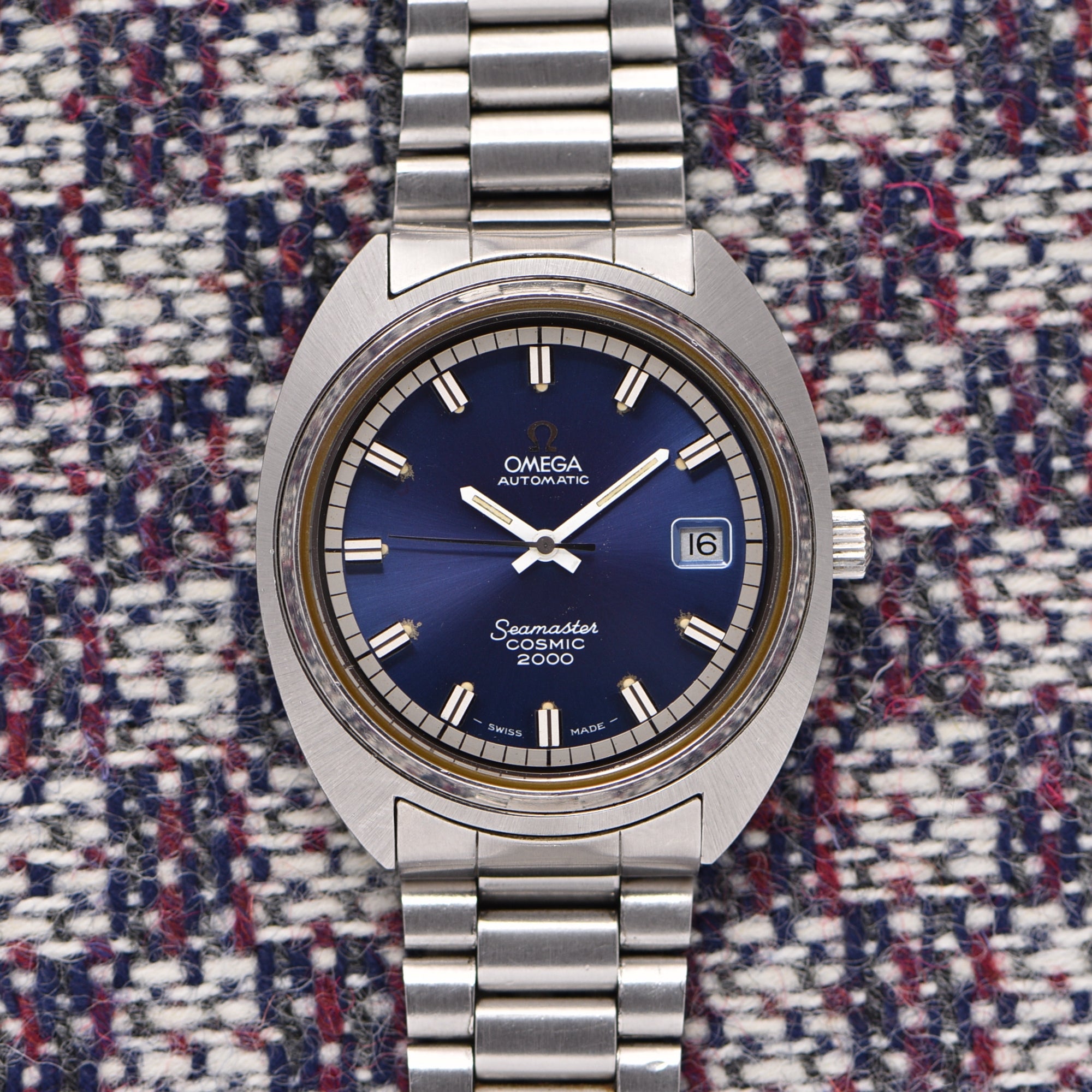
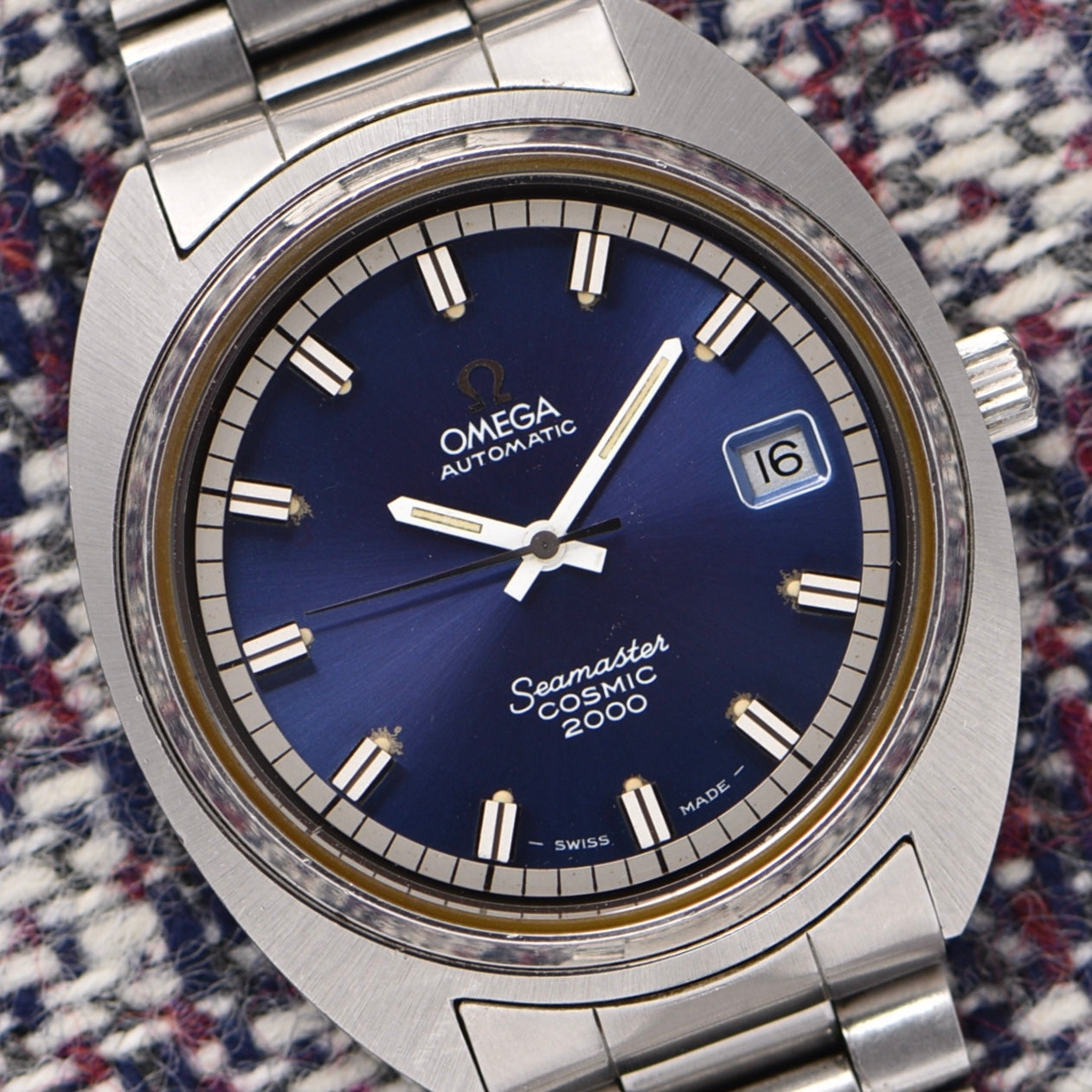
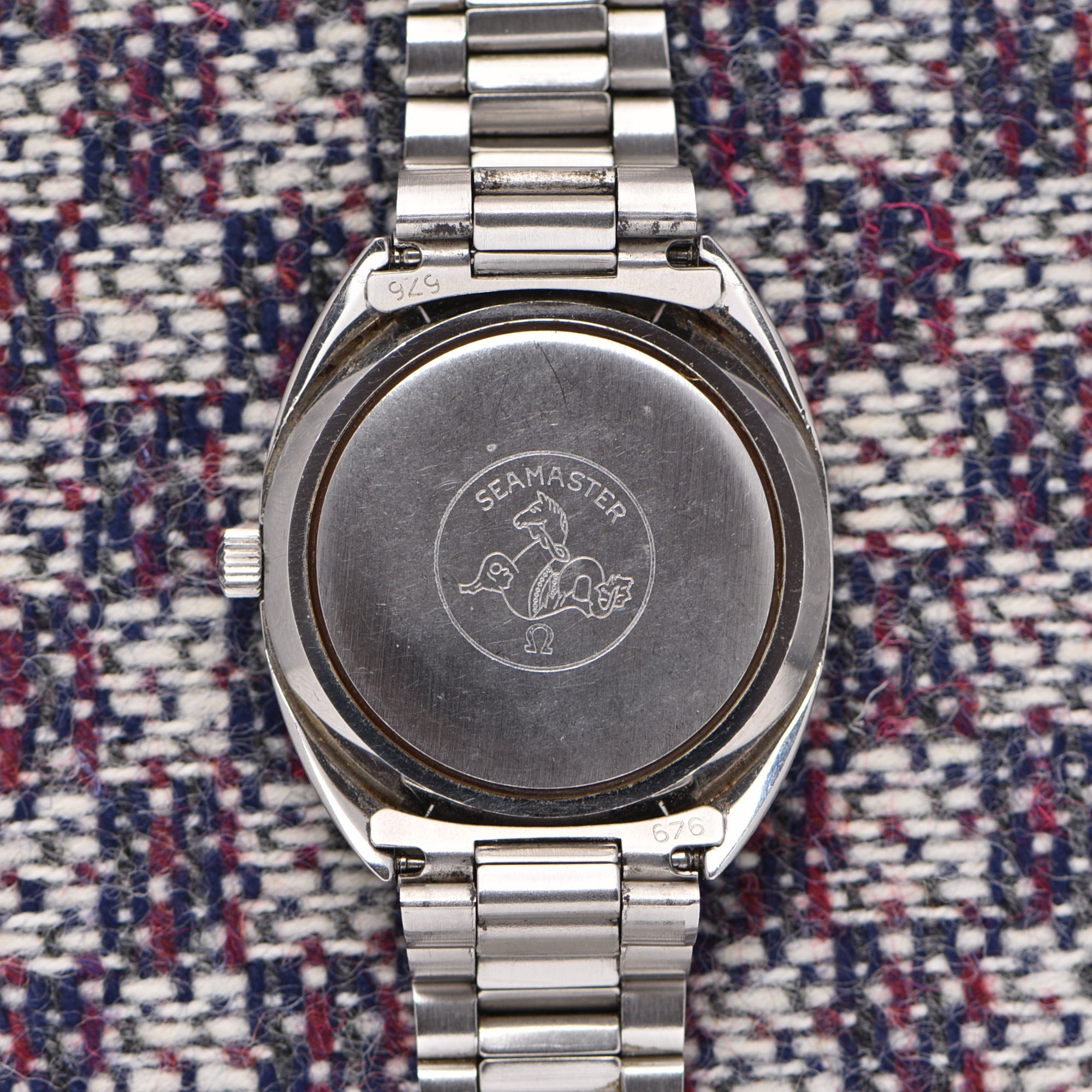
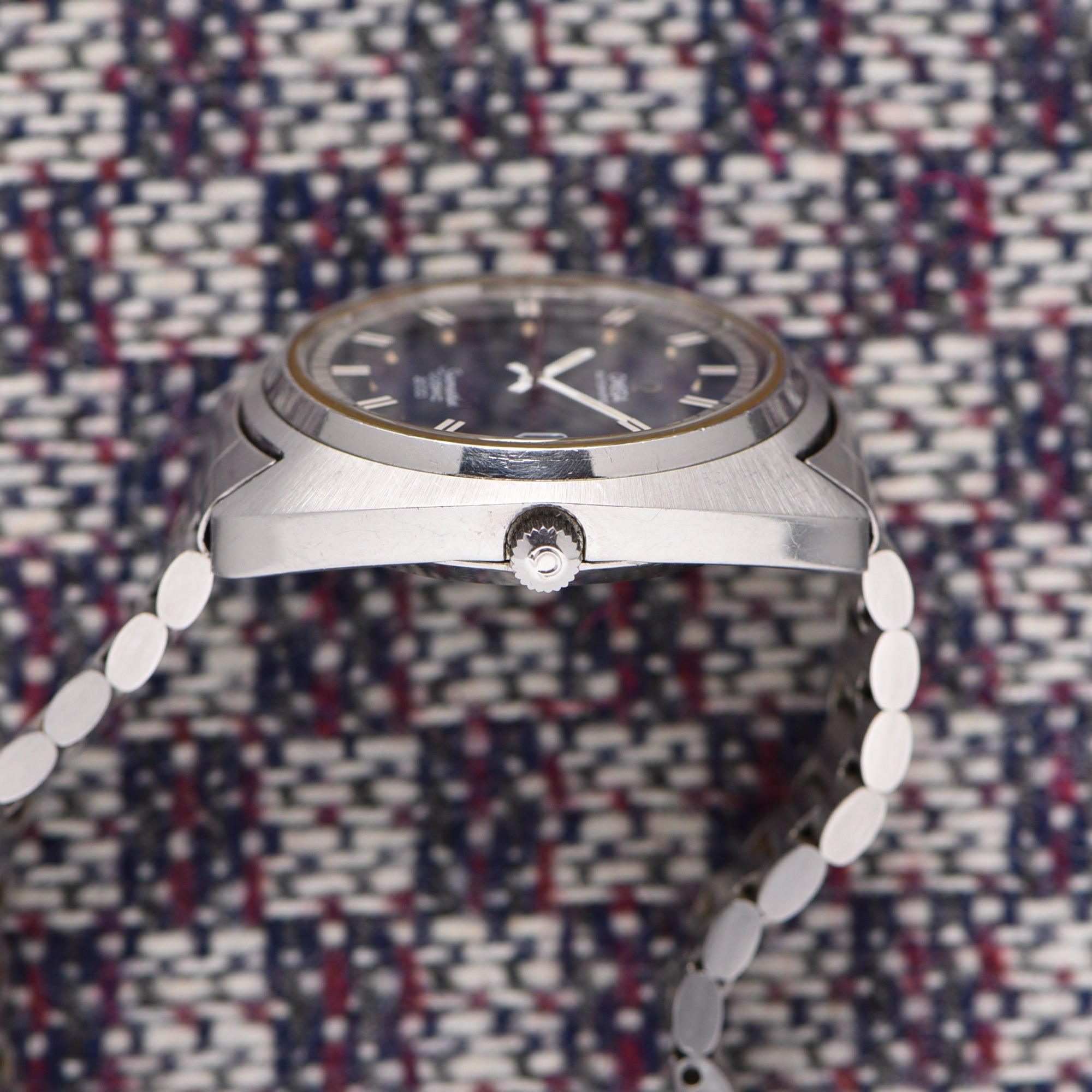
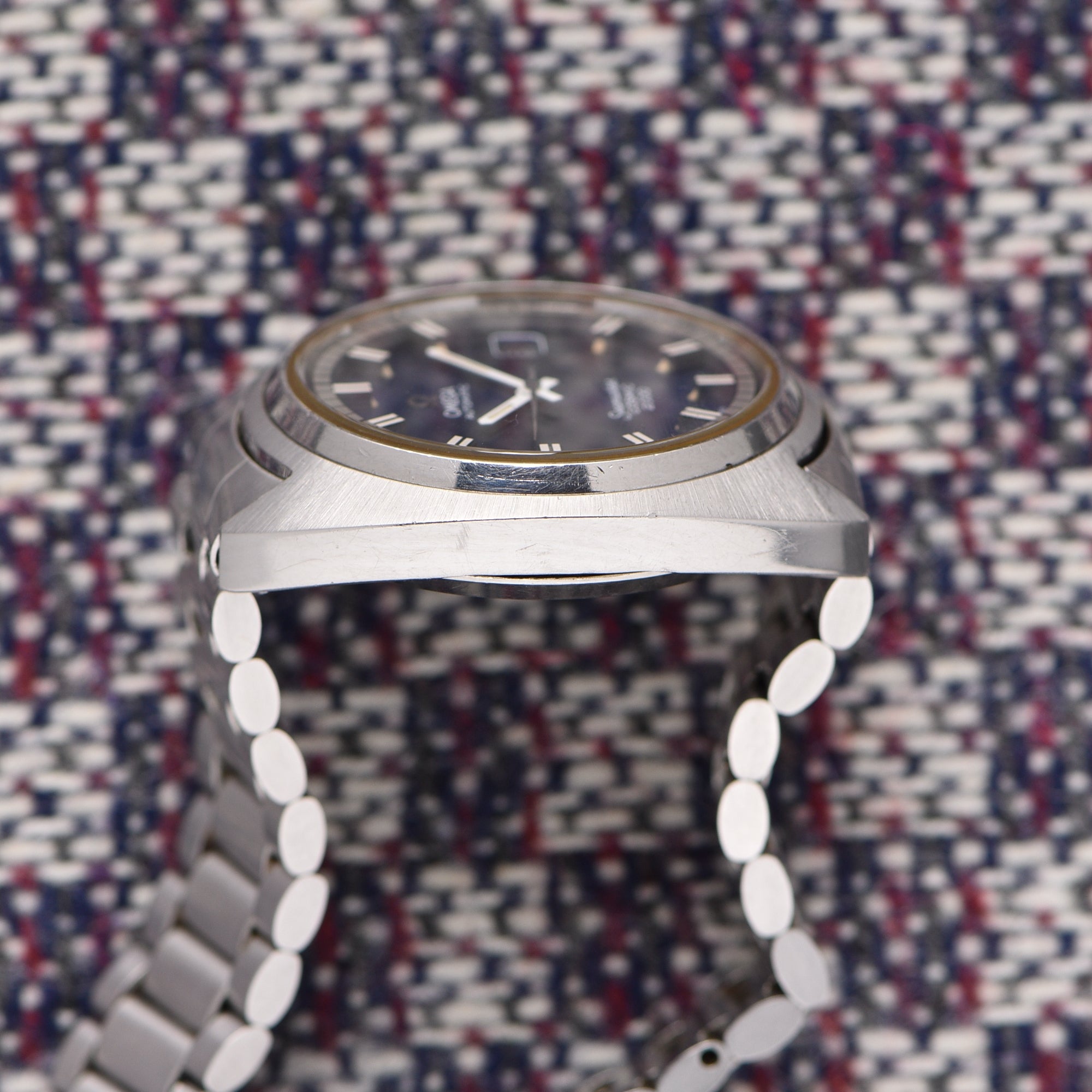
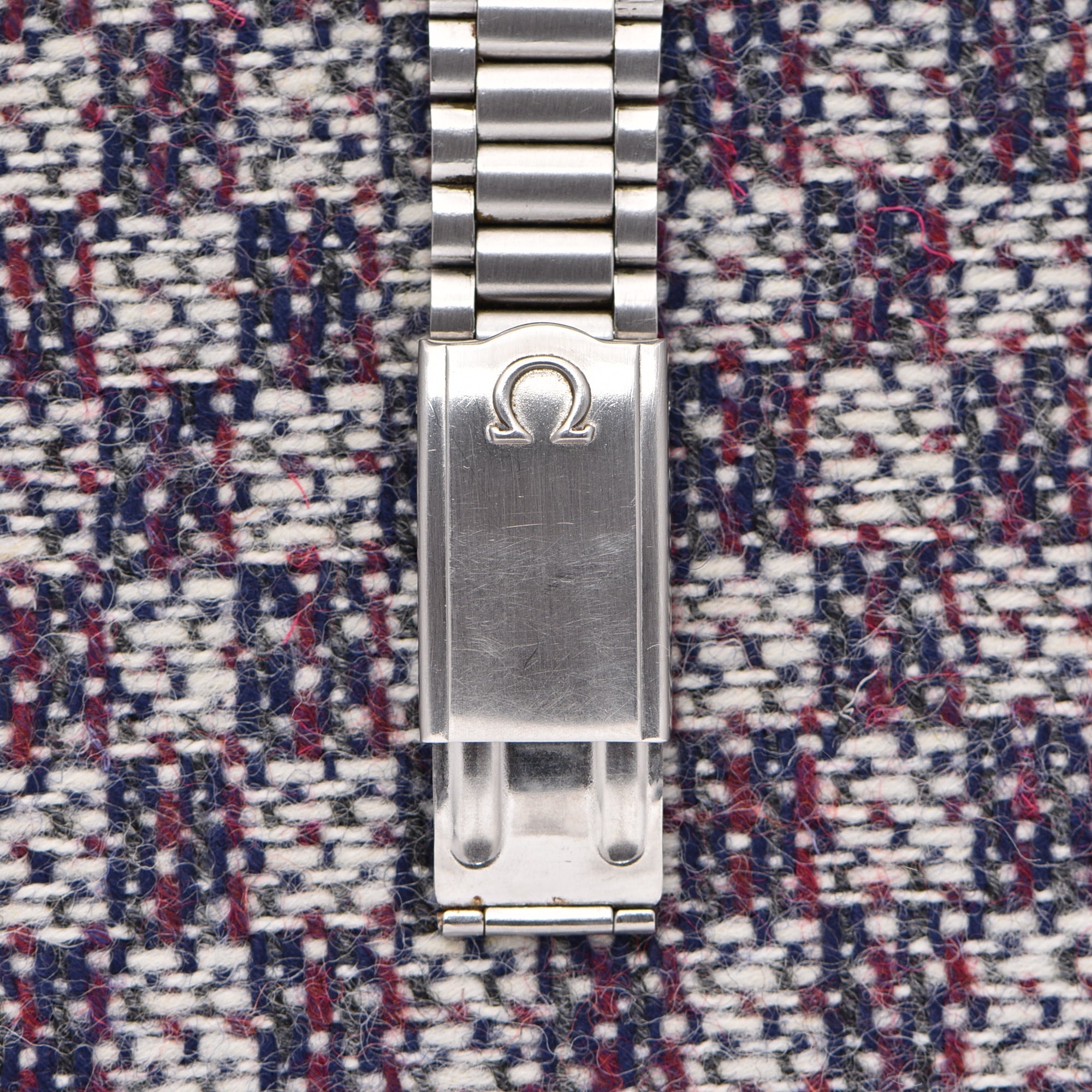

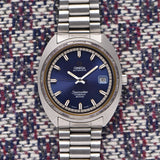
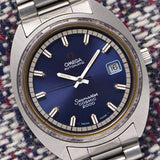
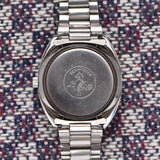
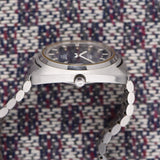
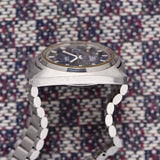
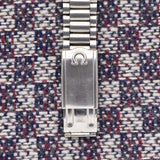
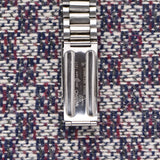
Omega Seamaster Cosmic 2000 - Indigo Blue Tropical Dial
- Ref. 166.0130
- Watch Only
- Specifications
- The Story
- The Brand
Year: 1960s
Model: Seamaster
Case Diameter: 38mm
Lug to Lug: 41mm
Case: Stainless Steel
Dial: Blue
Movement: Automatic
Condition
The case is unpolished with a sharp brushed finish and polished bezel. The dial is amazing with some signs of aging and certain parts starting to turn purple. The dial is more violet than blue at times. It also has a light star dust speckling in the center of the dial. The original 1171 bracelet fits right around a 7.25 inch wrist and smaller.
The Omega Seamaster, a popular watch, has a long history dating back to 1948. It was first introduced in 1948 as a tribute to Omega's 100th anniversary and became the brand's best seller. The Seamaster was modeled after waterproof wristwatches worn by the British military during World War II. Its O-ring gasket improved its water-resistance, making it resistant to temperatures up to 60 meters. In 1957, Omega introduced the Seamaster 300, designed for underwater use, but only capable of diving to 200 meters. Oceanographer Jacques Cousteau's team wore the watch during their Conshelf II experiments in the Red Sea.
By the mid-1990s, the Seamaster had fallen out of popularity, but it was selected as the James Bond watch. Pierce Brosnan wore an Omega Seamaster 300 in the film Golden Eye in 1995, and Daniel Craig wore an Omega Seamaster 300 and Planet Ocean in Casino Royale, Quantum of Solace, and Skyfall. In 2015, Omega released the special edition Seamaster 300 Spectre, harking back to the original Bond Seamaster.
The reference 166.0130 is all about the 70s. The large cushion case and bright dial take you back in time to when brands were truly exploring and experimenting new ideas.
Omega, a Swiss watchmaker founded in 1848, has a rich history of innovation and precision. The company's vision was carried on by its sons Louis-Paul and César, who pioneered full watch production under the brand's roof. In 1894, the company unveiled the world's first mass-produced, interchangeable watch movement, the Omega Calibre, which streamlined production and propelled the brand to international fame.
As the 20th century began, Omega watches became at the forefront of timekeeping technology and revolutionized sports watches with their precision. The Olympic Games provided an ideal stage for Omega to demonstrate its exceptional timekeeping abilities. In 1932, Omega began its role as Official Olympic Timekeeper, starting an enduring partnership spanning over 80 years. With each Games, Omega introduced groundbreaking timekeeping innovations, such as the first photo finish camera at the 1948 London Olympics.
Omega's contributions to spaceflight began in 1962 when the Omega Speedmaster became the first watch worn in space on Mercury-Atlas 6. Its defining moment came in 1969 with the Apollo 11 moon landing, where Buzz Aldrin stepped onto the moon wearing his trusty Omega Speedmaster Moonwatch. The company played an indispensable role in NASA's pioneering '60s space missions, including the Apollo 13 mission, where the Speedmaster timed the engine burn, ensuring the crew's safe descent to Earth.
Omega's cultural impact extends into pop culture through a long-running cinematic partnership with James Bond Movies. Since 1995's GoldenEye, James Bond has sported Omega watches on the silver screen, wearing the Seamaster Diver 300M and the rugged Omega Seamaster Planet Ocean.
Omega remains dedicated to exploring new technological frontiers today, with innovations like the battery-free Pictograms model, wearable tech collaborations, and energy-harnessing movements driving progress and cementing its place in history.
Omega Seamaster Cosmic 2000 - Indigo Blue Tropical Dial
Authenticity Guaranteed
All our watches are carefully inspected to insure and guarantee the authenticity.
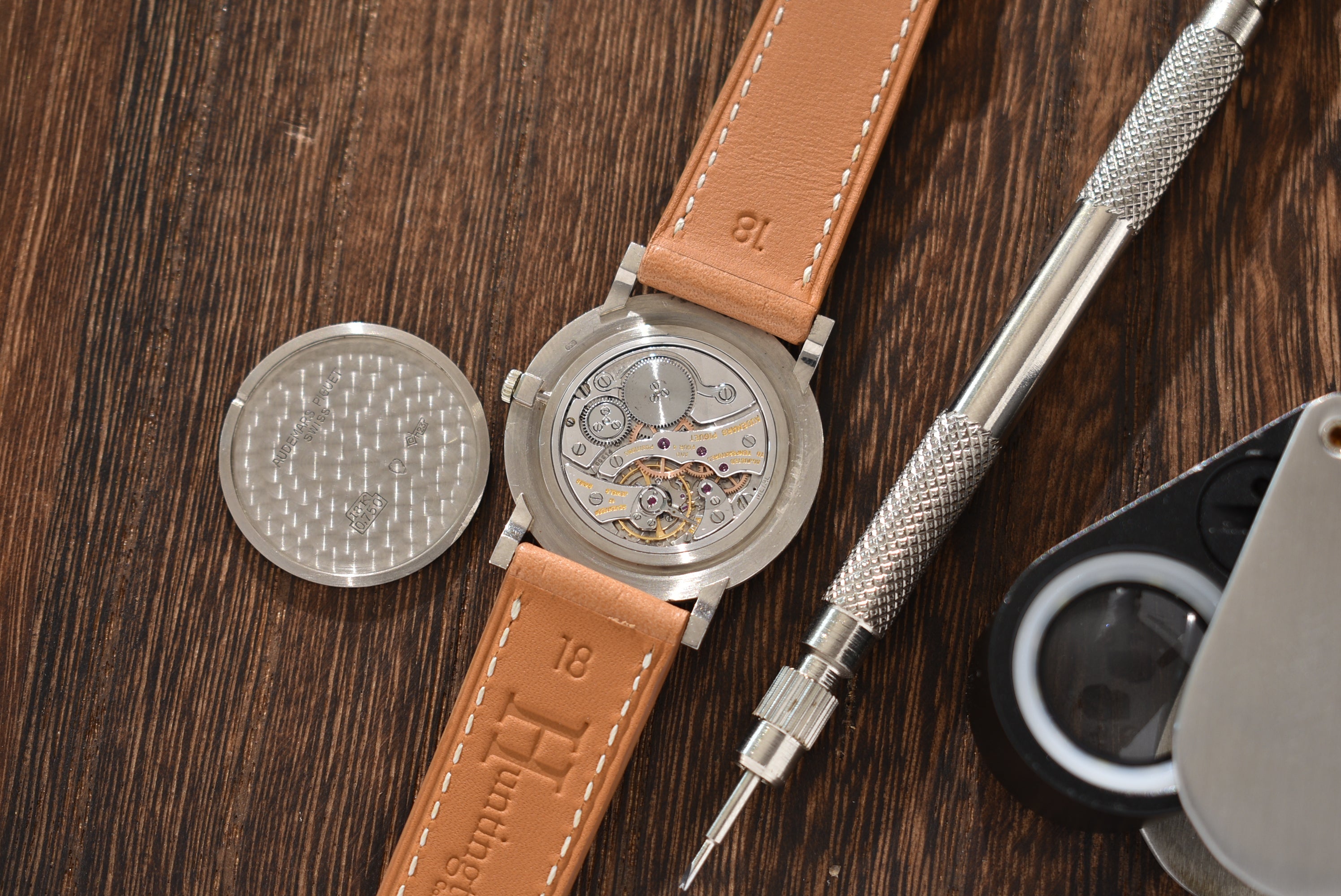
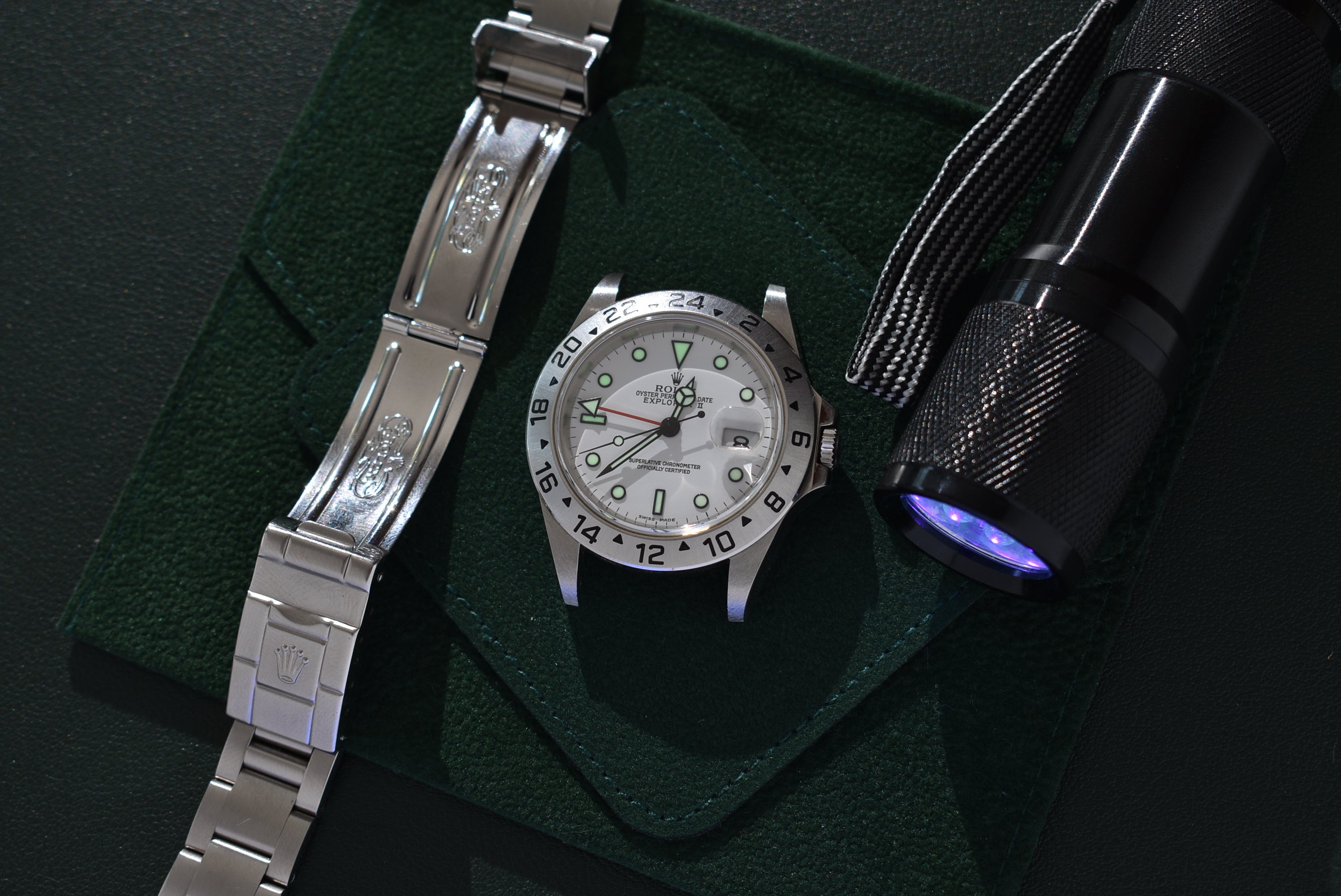
The Details
All our watches are scrutinized during inspection to make sure our descriptions are as accurate as possible.
- Related products
- Recently viewed
Cart
No more products available for purchase
Your Cart is Empty
Pair with
- Ref. 166.0130
- Watch Only
- Specifications
- The Story
- The Brand
Year: 1960s
Model: Seamaster
Case Diameter: 38mm
Lug to Lug: 41mm
Case: Stainless Steel
Dial: Blue
Movement: Automatic
Condition
The case is unpolished with a sharp brushed finish and polished bezel. The dial is amazing with some signs of aging and certain parts starting to turn purple. The dial is more violet than blue at times. It also has a light star dust speckling in the center of the dial. The original 1171 bracelet fits right around a 7.25 inch wrist and smaller.
The Omega Seamaster, a popular watch, has a long history dating back to 1948. It was first introduced in 1948 as a tribute to Omega's 100th anniversary and became the brand's best seller. The Seamaster was modeled after waterproof wristwatches worn by the British military during World War II. Its O-ring gasket improved its water-resistance, making it resistant to temperatures up to 60 meters. In 1957, Omega introduced the Seamaster 300, designed for underwater use, but only capable of diving to 200 meters. Oceanographer Jacques Cousteau's team wore the watch during their Conshelf II experiments in the Red Sea.
By the mid-1990s, the Seamaster had fallen out of popularity, but it was selected as the James Bond watch. Pierce Brosnan wore an Omega Seamaster 300 in the film Golden Eye in 1995, and Daniel Craig wore an Omega Seamaster 300 and Planet Ocean in Casino Royale, Quantum of Solace, and Skyfall. In 2015, Omega released the special edition Seamaster 300 Spectre, harking back to the original Bond Seamaster.
The reference 166.0130 is all about the 70s. The large cushion case and bright dial take you back in time to when brands were truly exploring and experimenting new ideas.
Omega, a Swiss watchmaker founded in 1848, has a rich history of innovation and precision. The company's vision was carried on by its sons Louis-Paul and César, who pioneered full watch production under the brand's roof. In 1894, the company unveiled the world's first mass-produced, interchangeable watch movement, the Omega Calibre, which streamlined production and propelled the brand to international fame.
As the 20th century began, Omega watches became at the forefront of timekeeping technology and revolutionized sports watches with their precision. The Olympic Games provided an ideal stage for Omega to demonstrate its exceptional timekeeping abilities. In 1932, Omega began its role as Official Olympic Timekeeper, starting an enduring partnership spanning over 80 years. With each Games, Omega introduced groundbreaking timekeeping innovations, such as the first photo finish camera at the 1948 London Olympics.
Omega's contributions to spaceflight began in 1962 when the Omega Speedmaster became the first watch worn in space on Mercury-Atlas 6. Its defining moment came in 1969 with the Apollo 11 moon landing, where Buzz Aldrin stepped onto the moon wearing his trusty Omega Speedmaster Moonwatch. The company played an indispensable role in NASA's pioneering '60s space missions, including the Apollo 13 mission, where the Speedmaster timed the engine burn, ensuring the crew's safe descent to Earth.
Omega's cultural impact extends into pop culture through a long-running cinematic partnership with James Bond Movies. Since 1995's GoldenEye, James Bond has sported Omega watches on the silver screen, wearing the Seamaster Diver 300M and the rugged Omega Seamaster Planet Ocean.
Omega remains dedicated to exploring new technological frontiers today, with innovations like the battery-free Pictograms model, wearable tech collaborations, and energy-harnessing movements driving progress and cementing its place in history.
